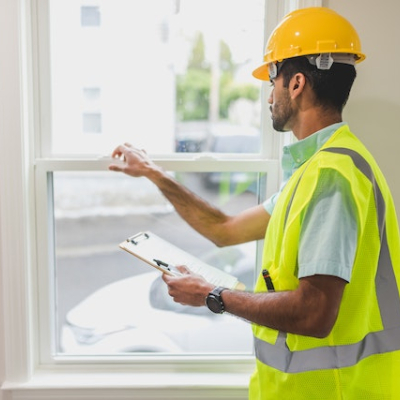

By Michael Rossi | Wed, May 24, 23
Prior to joining NEEP, I worked as a HERS Rater in Massachusetts for about two and a half years, and I want to share some lessons learned during this experience.
What is a HERS Rating?
“HERS” stands for Home Energy Rating System, and HERS Raters are accredited by the Residential Energy Services Network (RESNET). A HERS Index, which is a score that Raters award to a home energy system, is like a miles per gallon sticker on a car, but for a house! The lower the score, the more energy efficient the home’s design is, based on the criteria assessed in the Rating, which includes outputs like heating and cooling loads. A HERS 100 is equivalent, in terms of energy efficiency, to a new home constructed in 2006.
HERS Ratings may be used to aide code compliance for new residential construction in the Energy Rating Index Path of the International Energy Conservation Code (IECC) in Section R406 because they follow the RESNET/ICC 301 standard. Raters must have additional training to directly verify code compliance, but some jurisdictions like Massachusetts reference HERS Ratings as a path to code compliance in Section R406.4.
Given that background, here are some takeaways and lessons I’ve learned as a Rater.
Raters Are Coaches
Sometimes, HERS raters observe that builders might see energy ratings as the “last box to check” before obtaining an occupancy permit on a new home, and if something is not done properly, the Rater is standing in the way of finishing the project. In fact, Raters not only ensure compliance, but are also onsite to help.
HERS Raters are coaches that can help builders identify flaws in the thermal envelope, duct systems, and mechanical ventilation systems of the house. They work with builders to provide advice and feedback so that when a final inspection takes place, everything is working properly to ensure that future homeowners are comfortable and safe in their living environment. Builders should rely on Raters for advice throughout the construction process, and Raters should be willing to share valuable information that will help builders achieve compliance with their jurisdiction’s local energy code. I’ve seen situations where builders who initially struggle with meeting particular code requirements – such as duct leakage testing – avoid similar mistakes in future projects by learning from the guidance provided by a Rater.
Ventilation and Air Sealing are Key
Time and time again, I’ve heard the phrase that “we’re building houses too tight”. Although thermal envelope requirements are getting stricter for newer code cycles, this statement is misleading. A Whole-House Systems Approach is designed to make sure homes operate as one connected system, meaning that you can’t take one piece of the equation (in this case the thermal envelope) and isolate it from the rest of the building. If you build houses “tight” but don’t provide adequate ventilation, problems relating to excess moisture and mold may accumulate. Continuous mechanical ventilation systems that are installed properly will avoid these problems. Raters test ventilation systems to ensure that systems as a whole are going to ensure occupant safety.
That being said, an issue I’ve seen in the field is builders who struggle to meet air tightness requirements mandated by more recent codes. The solution is air sealing. Raters can identify common air leakage paths during the midpoint phase of construction (before drywall is installed but after insulation is installed) to call out items that must be addressed before it is too late (and costlier) to fix. There are some great resources relating to proper air sealing that can be found here.
You Can Get Buy-in From Builders With the Right Incentives
Energy efficiency may not be top of mind for some builders, which is understandable when there are other project aspects that are prioritized such as fire codes, but in fact, energy codes are also life safety codes. Monetary incentives can make it easier to get builders’ attention by sweetening the deal for energy efficiency. I was fortunate to have worked in Massachusetts, which provides great incentives for heat pumps and other efficient building strategies. Other states can look to Massachusetts as an example of best practice incentive programs.
It is a Growing Industry That Needs More Workers
Before starting my career as a HERS Rater, I was in a completely different occupation and did not have any background in building science, but was able to learn on the job and become proficient with the resources and training provided by my company. You don’t have to be a building- or energy expert going into the profession. As energy codes are becoming more stringent, the demand for HERS Raters and other building science professionals is already increasing. The industry needs to cast a wide net to find new Raters by reaching out to populations and communities that may not have heard of this profession. If you like problem solving, building models, and supporting energy efficient design practices, becoming a HERS Rater might be right for you. For more information on how to become a HERS Rater, please check out this webpage from RESNET.

